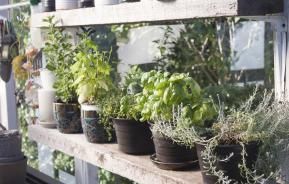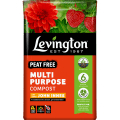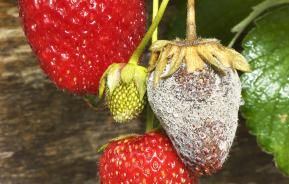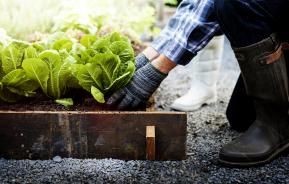1. French beans
To extend the cropping season well into autumn, now is the time to do more sowings of French beans. They can either be sown directly into place or started off in smaller pots to be planted out. Easy to grow and giving you a good harvest, they will perform best in a sheltered spot with sun and moist but well-drained soil.
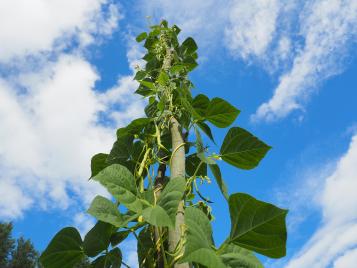
2. Spring onions
Spring onions are a quick crop to harvest and add to dishes like salads and stir fries through the year. For a continual harvest, seeds can be sown every two weeks from March all the way until September. They don’t require much space, so sow directly into the ground in an open, sunny spot with well-drained soil. Once the seedlings appear, ensure the soil is kept consistently moist. Around 8 weeks after sowing, the spring onions will be ready to harvest by gently forking the surrounding soil and pulling up the crops.
3. Lettuce
Another easy win is lettuce, which can be sown from March until September for a supply that’s pretty much year-round! When sowing lettuce in the summer, high soil temperatures can lead to seeds not germinating. Therefore, it’s ideal to sow in the evening, use cold water when watering, and ensure there is ample shade. Grow lettuce in Miracle-Gro Peat Free Premium Fruit and Vegetable Compost bag that acts as a flexible growbag. It can be used as a regular planter for crops like lettuce and tomatoes or turned on its side so it’s an extra deep planter for carrots or potatoes.
4. Carrots
July is the last month to sow carrot seeds for an autumn crop. Pick a sunny spot with fertile, well-drained soil and choose a maincrop variety, sowing seeds 1cm deep in rows that are 15-30cm apart. Although they are pretty drought resistant plants, in dry periods it’s ideal to give them a soak.
5. Spinach
Perpetual spinach is a winner year-round. In summer, seeds can be sown directly into the ground or into lengths of guttering or a container filled with Miracle-Gro Peat-Free All Purpose Compost with Organic Plant Food which provides the perfect structure for roots to grow. Plant in a position in partial shade and keep the compost moist by regularly watering especially when growing in a container or raised beds. Sowing continuously until September will give autumn and winter harvests but ensure there is protection from October onwards using straw or cloches.
6. Kohl rabi
For something a bit different, try growing kohl rabi. This brassica smells and tastes great, with a mild, sweet flavour. Sow directly into the ground in a sunny or partially shaded spot with fertile soil. Before planting dig in plenty of organic matter and fertiliser. Due to kohl rabi being smaller than other brassicas and able to grow in shallower soil, they are well suited for growing in containers or raised beds.
7. Radishes
Easy to grow and quick to mature, radishes can be ready to harvest in as little as four weeks – so what are you waiting for? Perfect for adding a slightly spicy crunch to your salads, they can be sown all the way from February to August in the ground, containers, or a growbag. Sow in short drills at a depth of 1cm and 2.5cm apart, keeping the soil moist for quick growth.
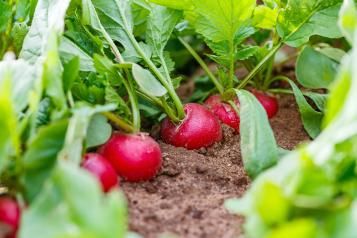
8. Pack choi
Pak choi can be directly sown at this time because growing before mid-summer can lead to them bolting, which is when a long stalk grows with the flowerhead to set seed. Thinly sow the seeds about 2cm deep either in cell trays or directly in the ground. If sown in trays, plant out the seedlings when they are 5cm tall in a well-drained spot. The leaves can be harvested from 30 days which are perfect in summer salads, but from around 45 days the pak choi can be harvested when the heart-like growth is ready, ideal for stir fries.
9. Turnips
They may not be the most exotic veg, but turnips are great to grow. Sow maincrop seeds in July or August in moist but well-drained soil. With this brassica you can get two for one because you can eat the sweet taproot as well as the tasty leaves. If you are just wanting the leafy tops to eat, then seeds can be sown closer together with rows about 15cm apart. However, if you want to grow for larger roots, space them at 23cm apart and harvest when they are the size of a golf ball.
10. Cabbages
Now is the time to plant out your winter veg too, for example spring cabbages can be sown in July and August, ready to be transplanted in autumn. Sow directly into the ground if you have the space to spare, or in modular trays outdoors. When transplanting, pick a sunny spot with firm soil, shuffling along the surface on your heels before raking it to ensure there’s a fine crumbly texture.
Summer is an exciting time in the garden, with the warm days welcoming us to spend time sowing, planting, growing, and enjoying the fruits (and vegetables) of our labour.


